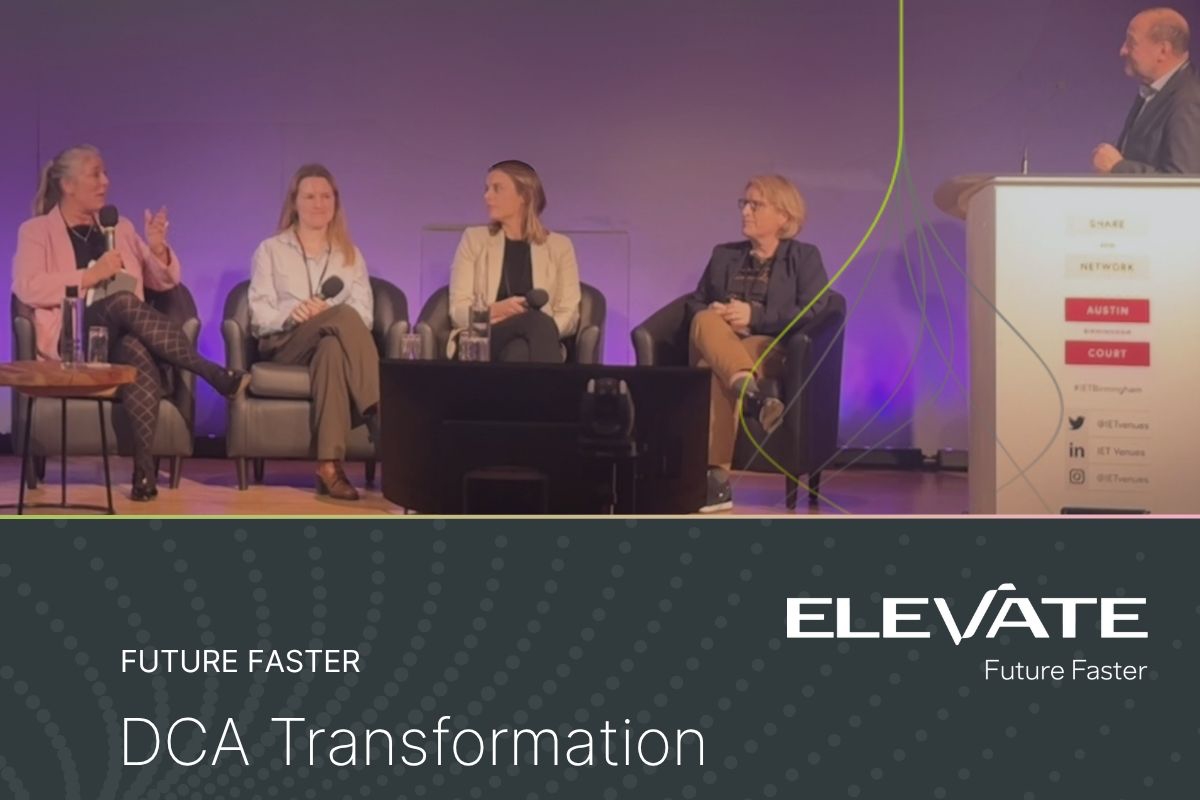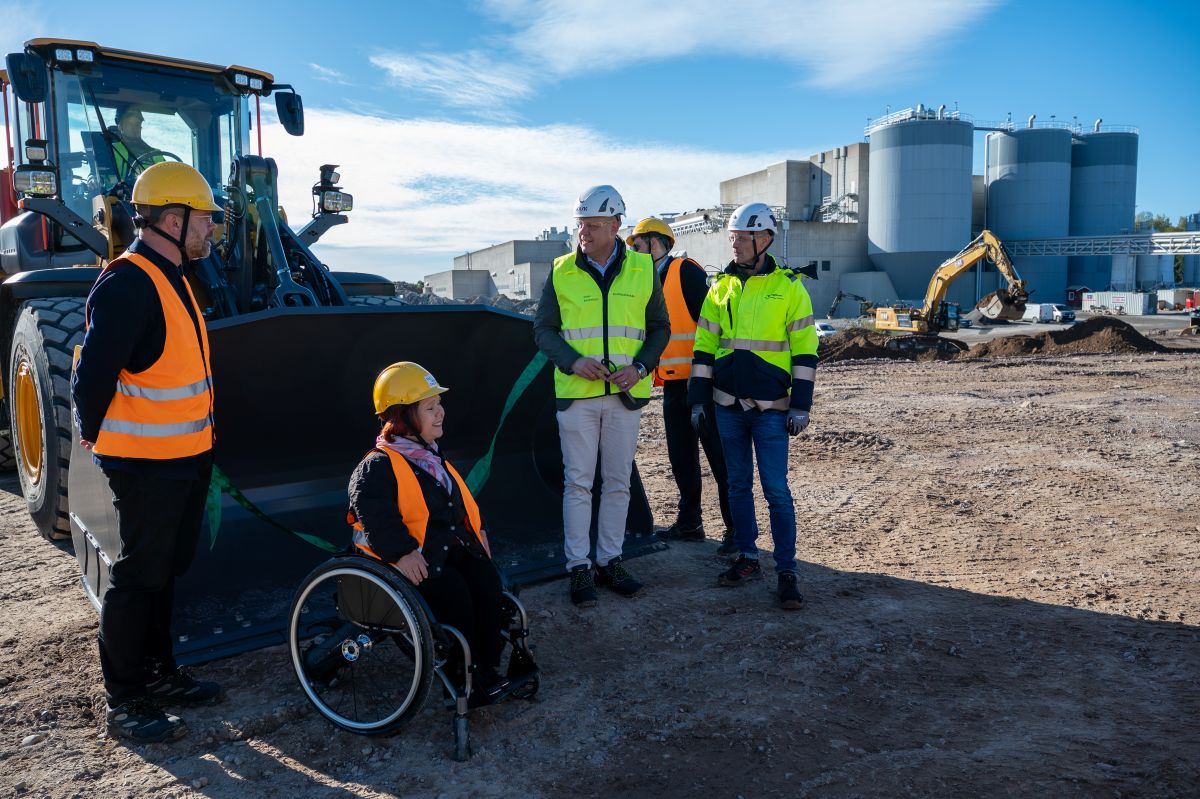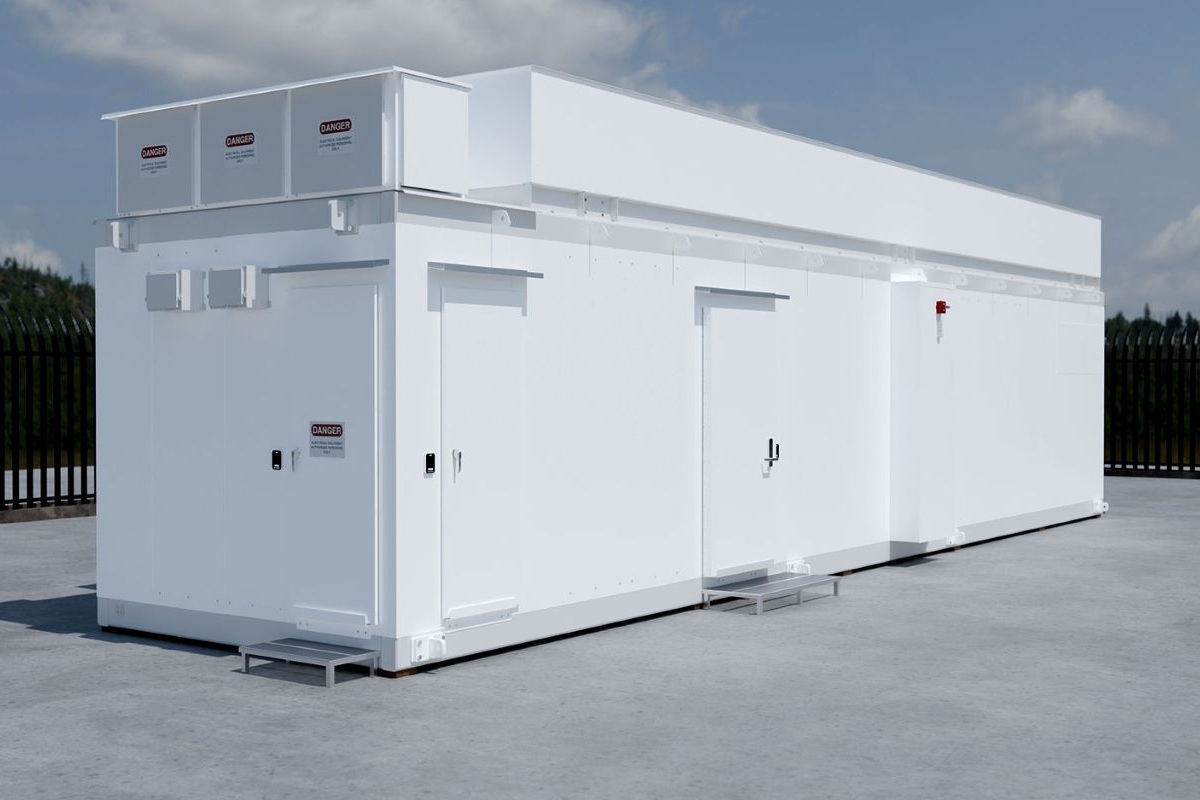Data Centres
Data Centres
Events
News
Sponsored
Datacentre Innovation Series 2025 announced
In an age where digital transformation is pivotal for every industry, TraiCon Events says it is proud to announce the Datacentre Innovation Series 2025, taking place on 10 December 2025 at the Park Hotel in Hyderabad, India.
This premier event will focus on the future of data centres, exploring new technologies, sustainability practices, and cutting-edge innovations that are reshaping the industry.
Transforming India’s data centre landscape
India’s data centre industry is on the brink of a major revolution, driven by cloud adoption, data sovereignty, AI, and the growing need for digital infrastructure.
With a rapidly expanding digital economy and increased reliance on cloud computing, India is investing heavily in modernising and expanding its data centre ecosystem.
The focus is on scalability, resilience, sustainability, and ensuring that data protection and privacy are at the forefront.
The Datacentre Innovation Series 2025 will delve into the most pressing topics such as edge computing, data centre automation, 5G infrastructure, green data centers, AI-driven operations, and cybersecurity.
Who should attend?
This high-level strategic forum will bring together more than 250 senior-level professionals, government officials, industry experts, technology innovators, and decision-makers to discuss the future of India’s data infrastructure and the rapidly evolving landscape of digital transformation.
Attendees will include:
• Data centre operators & providers• Cloud service providers (CSPs)• Telecom operators• Government & regulatory officials• Technology innovators & solution providers• Data security & privacy experts• Sustainability leaders• Data infrastructure investors• Designers & engineers of data centres• Academia & research institutions• Telecom & IT analysts
Why this series and why now?
India’s data centre industry is witnessing unprecedented growth, with an increasing focus on sustainability, cloud-first strategies, and the future of edge computing.
As the nation drives towards digital India initiatives and addresses data sovereignty concerns, it’s essential to stay ahead of the curve with the latest technologies and best practices.
With the rise of 5G, AI, and IoT, the demand for robust, scalable, and secure data centres is higher than ever before.
The Datacentre Innovation Series 2025 will equip professionals with the knowledge and strategies required to tackle the evolving challenges and ensure that India’s data centre ecosystem is ready for the demands of the future.
Joe Peck - 28 October 2025
Data Centres
Events
Sponsored
Elevate sparks dialogue at DCA Transformation 2025
Elevate – Future Faster, the data centre brand from Excel Networking, was represented by Rebecca Nye at the DCA Data Centre Transformation 2025 event held at IET Birmingham this week.
Rebecca joined a distinguished panel to discuss the evolving demands of the data centre sector and the bold questions shaping its future.
The panel, hosted by Mark Acton (DCA), featured industry leaders including Jovita Januskeviciute (JLL), Anastasia Wills (NGED), and Dr Sharon Richardson (Hoare Lea). Together, they explored:
• The immediate and long-term future of data centres
• The impact of AI on power requirements and infrastructure planning
• How far ahead we can realistically predict the digital landscape
• The role of nuclear power and the need for greater education around the importance of the data centre industry
Rebecca highlighted Elevate’s strengths in supporting clients through stock availability, reduced lead times, and just-in-time delivery - all critical factors in helping customers meet project timelines and scale with confidence.
Rebecca comments, “Elevate is here to accelerate transformation, challenge convention, and support our customers in navigating the complexities of tomorrow’s data centre environment.
“We’re seeing a shift in expectations. It’s not just about capacity anymore; it’s about agility, speed, and foresight.
“Elevate is committed to helping our partners stay ahead of the curve. We’re not just imagining the future; we’re building it."
Elevate – Future Faster continues to lead the charge in delivering high-density fibre solutions, containment solutions, ducting, and intelligent power distribution, alongside strategic partnerships with global innovators such as nVent, Sunbird, Senko, Schleifenbauer, and more.
For more information about Elevate and its mission to bring the future faster, reach out to Rebecca directly on Linkedin, visit Elevate's website, or follow Elevate on LinkedIn.
For more from Elevate, click here.
Joe Peck - 24 October 2025
Data Centres
Events
News
Sponsored
Data centres in the fast lane
Elevate – Future Faster is inviting industry professionals to join 'Data Centres in the Fast Lane', an afternoon of high-octane insight and networking at the F1 Arcade, St Paul’s, London.
Beginning with lunch at 12:00 and running through to prize giving at 18:00, the event marries technical depth with experiential energy.
Over five keynote sessions, speakers from Elevate, nVent, Sunbird, Senko, Axis, and RED Engineering will address critical challenges in modern data centre design. Highlights include:
• Cutting-edge rear-door and direct-to-chip cooling by nVent• DCIM strategies for ESG and operational reporting by Sunbird• High-performance fibre connectivity from Senko• Secure surveillance from perimeter to rack via Axis• Hybrid, future-ready infrastructure design by RED Engineering
After the presentations, attendees can compete in F1 racing simulators, with prizes for top performers and teams.
Spaces are limited and securing your spot ensures access to both technical discourse and an immersive experience. If you want to take part, you can register by clicking this link.
For more from Elevate – Future Faster, click here.
Joe Peck - 26 September 2025
Data Centre Build News & Insights
Data Centres
News
EcoDataCenter breaks ground on mega campus in Borlänge
EcoDataCenter has started construction of the new mega campus Kvarnsveden in Borlänge, Sweden. The project represents a long-term establishment of significant industrial scale, with the first data centre at the site scheduled for completion in early 2027.
Peter Michelson, CEO of EcoDataCenter, comments, “This is a historic day for EcoDataCenter, for Borlänge, and for Sweden. AI infrastructure is a new base industry, and Kvarnsveden will play a key role in supporting digitalisation. The facility in Borlänge will become one of the largest projects of its kind in Europe.”
At launch, EcoDataCenter 2 in Borlänge will have access to 250 MW, with the potential to scale up to 600 MW. The development follows EcoDataCenter’s acquisition of the former Kvarnsveden paper mill in 2024, creating a unique opportunity to transform an industrial landmark into a hub for next-generation technology.
Peter continues, “The facility once produced paper – the raw material of the newspaper information age. Now, Borlänge will produce the raw material for AI and the next information age.”
In parallel with the construction start, EcoDataCenter has also signed an exclusive agreement to acquire additional land at the site, ensuring additional capacity to meet the rapidly growing demand for compute power.
Erik Nises (S), Chairman of the Municipal Board in Borlänge, concludes, “We value what EcoDataCenter brings to our municipality and are pleased that construction can begin so soon after the site acquisition. We look forward to seeing the Kvarnsveden paper mill brought to life in a new form,” says Erik Nises (S), chairman of the municipal board in Borlänge.
For more from EcoDataCenter, click here.
Simon Rowley - 24 September 2025
Data Centre Infrastructure News & Trends
Data Centres
News
CDM unveils DC platforms for the AI era
Compu Dynamics Modular (CDM), an AI-era modular data centre solutions company drawing on Compu Dynamics’ two decades of comprehensive data centre expertise, has launched two modular data centre solutions engineered to overcome the toughest data centre bottlenecks: ultra-high density, rapid deployment, and seamless scaling across edge to core. The CDM L Series is purpose built and optimised for AI learning/training and ultra-high-density workloads, and the CDM I Series is an all-in-one solution designed for AI inference at the edge.
Ron Mann, Vice President of Compu Dynamics Modular, comments, “With AI pushing traditional infrastructure limits and no end in sight, we’ve developed two unique, purpose-built modular data centre solutions for learning, inference, and edge. Designed for efficiency and flexibility, these solutions ensure our customers never have to compromise. CDM is redefining the possibilities of modular data centres, and our products are built to handle the requirements of tomorrow’s landscape.”
As AI workloads grow exponentially, CDM believes that traditional data centres are increasingly falling short in terms of meeting speed, density, and flexibility requirements. CDM’s two new platforms will address this challenge by offering customers solutions for both AI and edge workloads, which demand different densities, scales, and deployment models.
“These innovative new platforms are the result of 20-plus years of expertise in data centre design and deployment,” states Steve Altizer, President and CEO of Compu Dynamics. “The Compu Dynamics Modular team has created two much-needed solutions that are built to grow and evolve with the applications they support.”
Features of the CDM L Series include:• Purpose built and optimized for ultra-high density AI workloads• Engineered for 50–250+ kW per rack• Scalable from 1.5 to 3+ MW• Dual-module architecture, delivering powerful performance for next-generation AI applications• Ideal for hyperscale, colocation, and GPU-intensive environments• Designed and built in the USA• Customisable base module and open OEM integration
Features of the CDM I Series include:
• Designed for edge deployments requiring fewer AI racks, or lower IT density per module• Engineered for 50–250+ kW per rack• Supports up to 500 kW per module with air cooling and 1+ MW with combined air and liquid cooling• Compact, all-in-one architecture to reduce space, streamline deployment and reduce complexity• Ideal for telecom, healthcare, education, and government sectors• Designed and built in the USA• Customisable base module and open OEM integration
Both platforms also offer fast, flexible deployment and seamless scalability, as well as being technology neutral, supporting multiple IT hardware and infrastructure OEM equipment sources with no vendor lock-in. CDM provides full-service, end-to-end support for these platforms, from evaluation to delivery and ongoing preventive maintenance. The company’s turnkey and vendor-neutral approach to modular solutions accelerates deployment while reducing costs. With this launch, CDM says that it is empowering customers to face the AI era fully prepared and confident in the company's infrastructure.
For more from Compu Dynamics Modular, click here.
Simon Rowley - 17 September 2025
Data Centre Operations: Optimising Infrastructure for Performance and Reliability
Data Centres
Edge Computing in Modern Data Centre Operations
News
Duos deploys fifth edge data centre
Duos Technologies Group, through its operating subsidiary Duos Edge AI, a provider of adaptive, versatile and streamlined edge data centre (EDC) solutions tailored to meet evolving needs in any environment, has announced its latest data centre deployment towards its anticipated goal of 15 deployments by the year's end.
The latest EDC is in partnership with Dumas Independent School District to deploy an on-premise EDC in Dumas, Texas. This project marks another milestone in Duos Edge AI’s expansion into rural communities, providing low-latency compute and connectivity that directly support K-12 education and regional growth.
The Dumas ISD edge data centre will serve as a localised hub for real-time data processing, enabling advanced educational tools, stronger digital infrastructure, and improved connectivity for students and staff across the district.
“As Director of Information Technology for Dumas ISD, I am excited about our partnership with Duos Edge AI,” says Raymond Brady, Director of Information Technology at Dumas ISD. “This collaboration brings direct, on premise access to a cutting-edge data centre, an extraordinary opportunity for a rural community like Dumas. It will significantly strengthen the district’s technology capabilities and support our mission of achieving academic excellence through collaboration with students, parents, and the community. I look forward to working with Duos Edge AI as we continue to provide innovative technology for our students and staff, ensuring every student is prepared for success.”
“This partnership with Dumas ISD is a perfect example of how edge technology can create lasting impact in rural communities,” adds Doug Recker, newly appointed President of Duos Technologies Group and the founder of subsidiary, Duos Edge AI. “By placing powerful computing infrastructure directly on campus, we’re helping schools like Dumas unlock real-time digital tools that drive student achievement, workforce readiness, and community growth.”
This deployment is part of Duos Edge AI’s broader 2025 plan to establish 15 modular EDCs nationwide, with a focus on underserved and high-growth markets. By locating advanced computing infrastructure closer to end users, Duos Edge AI ensures reliable, secure, and scalable technological access for schools, healthcare facilities, and local communities.
For more from Duos Edge, click here.
Simon Rowley - 17 September 2025
Data Centre Build News & Insights
Data Centres
News
Renewables and Energy: Infrastructure Builds Driving Sustainable Power
Microgrids are key to accelerating DC growth, research finds
A combination of renewables, grid balancing engines and energy storage make for the most cost-effective microgrids to power data centres, while also cutting emissions and providing vital grid balancing to enable the energy transition, according to a new research paper from technology group Wärtsilä and energy solutions business AVK.
The paper, Data centre dispatchable capacity: a major opportunity for Europe’s energy transition, provides new analysis on how data centre microgrids can reduce grid infrastructure spending, emissions and wasted energy, while providing a balanced path for the energy transition.The analysis finds that powering the data centres across Europe by optimised microgrids could create a significant bank of dispatchable power, supporting the entire continent’s energy transition.
The rapid growth of AI is driving increased demand for data centres across Europe, which is expected to increase by 250% by 2030, from 10GW to 35GW. With the continent’s grid facing constraints from high energy prices and bloated grid connection queues, data centre operators are increasingly turning to off-grid solutions to power these energy-intensive assets.
Anders Lindberg, President of Wärtsilä Energy and Executive Vice President of Wärtsilä, says, “The growth of AI over recent years has been extraordinary, and as it continues to transform the way we live and work, it drives a need for more energy. This is causing significant challenges for grid operators across Europe, who are struggling with rising costs and up to a 10-year waiting time for a grid connection.
“By investing in microgrids, data centres can sidestep energy constraints, and with the right technology mix of renewables, grid balancing engines and energy storage, can ensure their emissions profiles and costs do not outweigh the huge benefits that AI brings.
AVK CEO Ben Pritchard comments, “The answer to the challenges we face in combatting climate change is as much to do with changing behaviours as developing new technologies. And the key to behavioural change is the recognition that there are different ways of doing things. The solutions outlined in this paper are not impractical; they are based on real-world cases and calculations. All that’s needed to make them more widespread is for investors, operators, equipment suppliers, planners, policy makers to recognise the widespread benefits that sharing dispatchable data centre capacity with the grid can bring and pass that knowledge on.”
In addition to benefits created by microgrids, engine power plants bring cost efficiencies to data centre power generation. Modelling an 80MW data centre, a combination of engine power plants, renewables, and energy storage provides the lowest levelised cost of electricity – at 108 EUR/MWh – in comparison to three other real-world scenarios. It also offers a low emissions scenario in comparison to the other modelled scenarios, and particularly in comparison to gas turbines. The emissions of engine power plants can also decrease as sustainable fuels become commercially available.
“Through investing in flexibility, microgrids can have the lowest possible cost, while cutting emissions dramatically compared to other pathways including turbines. This flexibility can have a significant, positive impact on the continent’s digital and energy transition,” Anders Lindberg states.
On current trajectories, 40% of existing AI data centres will be operationally constrained by power availability by 2027. Microgrids can take this new strain off the grid in the short term and when grid connection is achieved, excess energy generated can be sold. As well as furthering cost reductions for data centre operators, this can provide vital flexibility to Europe's power challenges.
Read the new research paper by clicking here.
For more from AVK, click here.
Simon Rowley - 16 September 2025
Data Centre Build News & Insights
Data Centres
News
Quantum Computing: Infrastructure Builds, Deployment & Innovation
Quantum-AI data centre opens in New York City
Oxford Quantum Circuits (OQC) and Digital Realty today announced the launch of the first Quantum-AI Data Centre in New York City, located at Digital Realty’s JFK10 facility and built with NVIDIA GH200 Grace Hopper Superchips.
- Quantum-AI Data Centre: OQC and Digital Realty are working with NVIDIA to integrate superconducting quantum computers and AI supercomputing under one roof, creating a data centre built for the Quantum-AI era.
- Landmark deployment and integration: OQC’s GENESIS quantum computer will integrate NVIDIA Grace Hopper Superchips to become the first-ever quantum computing system deployed in New York City. OQC plans to integrate its quantum hardware with NVIDIA accelerated computing to support the scalability of future systems.
- Quantum-AI at scale: Embedded within Digital Realty’s global platform, PlatformDIGITAL, OQC is delivering secure, interconnected Quantum-AI infrastructure to power breakthroughs from Wall Street to Security – a central pillar of the UK–US tech trade Partnership to be announced.The Quantum-AI Data Centre brings together OQC’s quantum computing, NVIDIA accelerated AI hardware, and Digital Realty’s cutting-edge global infrastructure, eliminating geographical and infrastructure barriers to enable businesses to harness the power of quantum compute and AI. This initiative allows enterprises to access an integrated environment where quantum computing powers the AI revolution: enabling faster model training, more efficient data generation, and transformative applications in finance and security.
The system features OQC GENESIS, a logical-era quantum computer, installed within Digital Realty’s secure JFK10 site – the first-ever quantum computer installed within a New York City data centre. Integrated with NVIDIA Grace Hopper Superchips, the platform provides a launchpad for hybrid workloads and enterprise adoption at scale. OQC expects that future GENESIS systems will ship with NVIDIA accelerated computing as standard, building on its earlier collaboration integrating the NVIDIA CUDA-Q platform and providing developers seamless tools to build hybrid quantum-AI applications.
“This Quantum-AI Data Centre demonstrates how quantum can drive the AI revolution - securely, practically, and at scale - while strengthening the UK–US technology alliance.” says Gerald Mullally, CEO of OQC. “Leveraging Digital Realty’s infrastructure and NVIDIA supercomputing, we are redefining enterprise computing for finance and security.”
“Digital Realty’s mission has always been to enable the world’s most innovative technologies by providing secure, interconnected infrastructure at global scale,” adds Andy Power, President & CEO of Digital Realty. “By working with OQC, we’re using NVIDIA supercomputing to make Quantum-AI directly accessible in one of the world’s most important data hubs - empowering enterprises and governments to unlock new levels of performance and resilience.”
Science Minister Patrick Vallance comments, “Quantum computing could transform everything - from speeding up drug discovery to supercharging clean energy so we can cut bills. The economic prize is enormous, with £212 billion expected to flow into the UK economy by 2045 and tens of thousands of high-skilled jobs on offer. OQC’s launch of the first quantum computer in New York City showcases British tech excellence and strengthens our transatlantic ties. And the industry’s first quantum-AI data centre will put British innovation at the heart of next-gen computing - delivering speed, scale and security to tackle problems today’s tech is yet to grasp."
Applications and impact
By integrating quantum computing with NVIDIA AI supercomputing inside a secure enterprise-grade data centre, OQC and Digital Realty are creating a platform that will unlock new possibilities across critical sectors:
Finance: Faster and more accurate risk modelling, portfolio optimisation, fraud detection, and derivatives pricing, delivering competitive advantage in the world’s most data-intensive markets.
Security: Advanced material simulation, logistics optimisation, and decision-making under uncertainty, strengthening resilience in mission-critical domains.
Quantum for AI: Quantum computing will unlock new frontiers for AI itself, from accelerating model training and efficient data generation to emerging quantum machine learning applications with transformative impact across industries.
“This milestone shows the strength of a British tech leader scaling globally through international collaboration,” says Jack Boyer, Chair of OQC. “Working with Digital Realty and using NVIDIA supercomputing here in the United States, OQC demonstrates how the UK and US can lead together in the responsible deployment of frontier technologies for finance and security”
“The UK–US technology alliance is vital to ensuring that powerful new capabilities like quantum computing protect our nations, improve our prosperity, and are developed securely and in line with democratic values,” remarks Sir Jeremy Fleming, OQC Board member and former Director of GCHQ. “This deployment combines British innovation and American infrastructure, and brings NVIDIA’s AI leadership to deliver trusted computing power for the most critical applications.”
Proven technology and roadmap
OQC is reportedly the only quantum computing company with live deployments into colocated data centres: OQC already has systems operating in London and Tokyo, and now in New York. Its patented dual-rail Dimon qubit technology represents a breakthrough in error suppression, reducing the hardware overheads needed for error-corrected qubits and accelerating the path to fault-tolerant quantum computing. OQC has set a market leading roadmap – in collaboration with Digital Realty – to deliver scalable, commercially viable systems, with near-term impact in finance, defence, and AI. As a British champion of quantum computing, OQC is committed to building systems that drive both commercial advantage and national resilience.
For more from Digital Realty, click here.
Simon Rowley - 16 September 2025
Data Centres
Events
News
DCNN celebrates National Data Centre Day
Today marks the first National Data Centre Day, an annual initiative recognising the vital role of data centres in powering the UK’s digital economy and AI ambitions. Taking place each year on 12 September, the date commemorates when data centres were officially designated as Critical National Infrastructure (CNI) by the UK Government in 2021.
The awareness day aims to spotlight the innovation, sustainability, and people driving this essential sector forward, while also encouraging greater recognition of the industry’s contribution to society.
As part of the celebrations, figures from across the sector have begun sharing their reflections on why National Data Centre Day matters, as well as the challenges and opportunities that lie ahead.
Cooling at the forefront
Ted Pulfer, Data Centre Director at Lennox Data Centre Solutions, highlights how cooling has become central to the industry’s progress:
"National Data Centre Day is a significant moment for the UK industry. Marking a year since data centres were formally recognised as Critical National Infrastructure, it offers an opportunity to reflect on the evolution and challenges of the past year.
“Cooling, once ‘part of’ the supporting infrastructure, has now moved to the forefront of the conversation, driven by increasing compute densities, AI workloads, and the rise of liquid cooling.
"What’s particularly exciting is the collaboration this has inspired across manufacturers, engineers, and end users. Cooling is no longer a niche issue; it has become a strategic enabler of digital progress.”
Connectivity as the foundation
David Bruce, CRO of Neos Networks, points to the crucial role of fibre in enabling sustainable growth:
“National Data Centre Day is a welcome opportunity to celebrate an industry that has quietly become the backbone of our digital lives.
"From powering AI and cloud to supporting healthcare, finance, and public services, data centres are now rightly recognised as Critical National Infrastructure. Their role in enabling growth, innovation, and resilience cannot be overstated.
“But as we look to the future, we must also recognise that data centres do not stand alone. Compute and power are essential, but it is fibre that connects investment to opportunity.
"Without high-capacity, resilient networks stretching across the country, the benefits of our expanding data centre footprint risk being unevenly distributed and bottlenecked."
Recognition and the road ahead
National Data Centre Day provides the sector with a moment to reflect on its progress, showcase innovation, and address the challenges ahead.
From cooling breakthroughs to fibre expansion, the themes highlighted today underline the growing strategic importance of digital infrastructure to the UK economy and society at large.
For more on National Data Centre Day, click here.
Joe Peck - 12 September 2025
Data Centres
Events
News
DTX London 2025 returns
DTX London, a UK event dedicated to business transformation, will open its doors at ExCeL on 1-2 October 2025 for its 20th anniversary.
Dedicated to ‘Innovation with integrity; driving value, delivering purpose’, this year’s event will showcase a lineup of prominent speakers, including Olympic Champion Mo Farah, who will "help technology teams establish the skills, mindsets, and tools to tackle transformation challenges, enhance experiences, and fuel growth."
The operators say DTX 2025 has been "reimagined to unite the people, technologies, and strategies that drive purposeful, long-term business change." Every stage is built around the real-world challenges facing organisations today, while offering an educational programme which highlights the importance of people in achieving successful business transformation.
The Main Stage will host technology experts from the newly formed DTX Advisory Board. These senior leaders - from organisations including Segro, Apollo, Santander, Vanquis, the NFL, and RSA - are driving digital and business transformation across the UK. They will share practical insights and first-hand experience on delivering projects designed for long-term success.
Highlight speakers include athlete Mo Farah, who will open the event on day one, discussing how business leaders can turn their aspirations into groundbreaking realities; Jason Hardy, CTO for AI at Hitachi Vantara, who will speak on the Data & AI Stage, discussing why AI’s future depends on data integrity; and Alan Reed, Head of Platform Innovation at bet365, who will discuss why most AI initiatives fail and how to beat the odds.
While cyber has traditionally had its own dedicated part of the show, this year’s event will see the topic weaved across all stages with a big focus on human-cyber risk. This reflects the real-world reality that cyber is not solely the responsibility of security teams; it's a business-wide priority that affects every department and technology initiative, carrying serious consequences if overlooked.
One of many panels on the Holistic Cyber Strategies Stage will feature experts from Deliveroo and Citi, discussing how AI can be implemented responsibly without neglecting security, and Moona Ederveen, Principal Consultant at Information Security Forum, who will also present on how organisations cut through the hype around quantum threats and build a realistic roadmap for readiness.
The Main Stage will tackle the most pressing themes from navigating geopolitical impacts to building the future workforce, featuring a panel of C-level executives from Vanquis, the University of East London, and Lloyds Banking Group discussing how to align tech leadership for strategic impact.
Attendees will also be treated to a session from UK Editor Bryan Glick of Computer Weekly. His publication is responsible for uncovering and reporting on the Post Office scandal, spotlighting injustice while actively campaigning to overturn wrongful convictions. Bryan will take to the Main Stage for a fireside chat with Sharon Gunn, Chief Executive for BCS, on day one, discussing lessons learned from Computer Weekly’s 16-year reporting on the scandal, while also highlighting the important role of people in technology.
This year’s DTX - which is once again colocated with Unified Communications Expo (UCX) - is centred around the importance of people in business and digital evolution, exploring how people, platforms, and processes come together to accelerate real transformation. It is the place to hear about how businesses can leverage the latest technology advances for every job function, from developers to cyber teams and everyone in between, all under one roof.
DTX + UCX is designed for anyone influencing technology selection and implementation, helping them discover innovation and find solutions that drive measurable business benefits.
Why attend DTX + UCX London
• Purpose-driven technology sourcing — See the latest innovations and discover the technologies and solutions that support your business objectives. Gain insights into emerging trends and best practices for leveraging technology to drive efficiency and growth.
• Connecting teams & bridging silos — Foster collaboration and knowledge sharing by connecting with leading tech teams and experts. Forge valuable partnerships, break down internal silos, and unlock the collective potential of your organisation.
• Meaningful conversations & networking — Engage with industry leaders, peers, and technology providers. Build strategic relationships, explore innovative solutions, and gain valuable perspectives that will shape your business transformation journey.
• Driving measurable benefit — Translate technology investments into tangible business outcomes. Learn how to optimise processes, enhance customer experiences, and generate sustainable growth through strategic technology adoption.
To guarantee a front-row seat and join the game-changers and tech pioneers at this year’s event, get your free pass here.
Access the full agenda here.
For more from DTX, click here.
Joe Peck - 4 September 2025

Head office & Accounts:
Suite 14, 6-8 Revenge Road, Lordswood
Kent ME5 8UD
T: +44 (0)1634 673163
F: +44 (0)1634 673173









